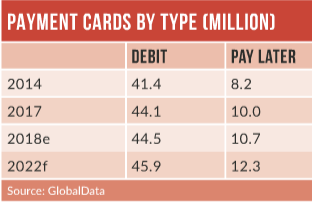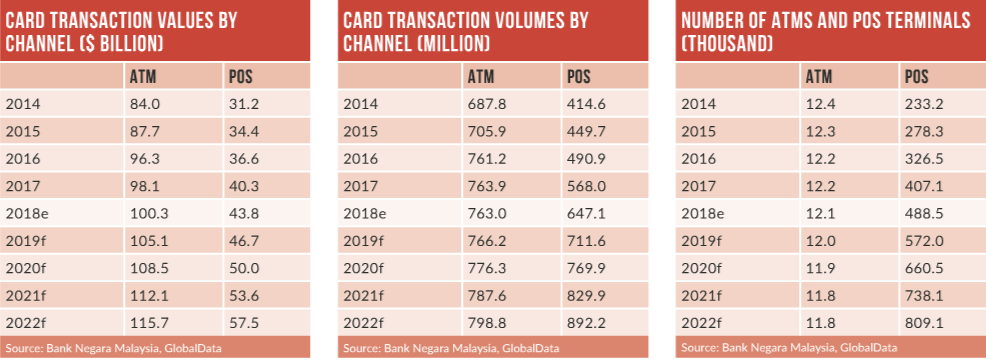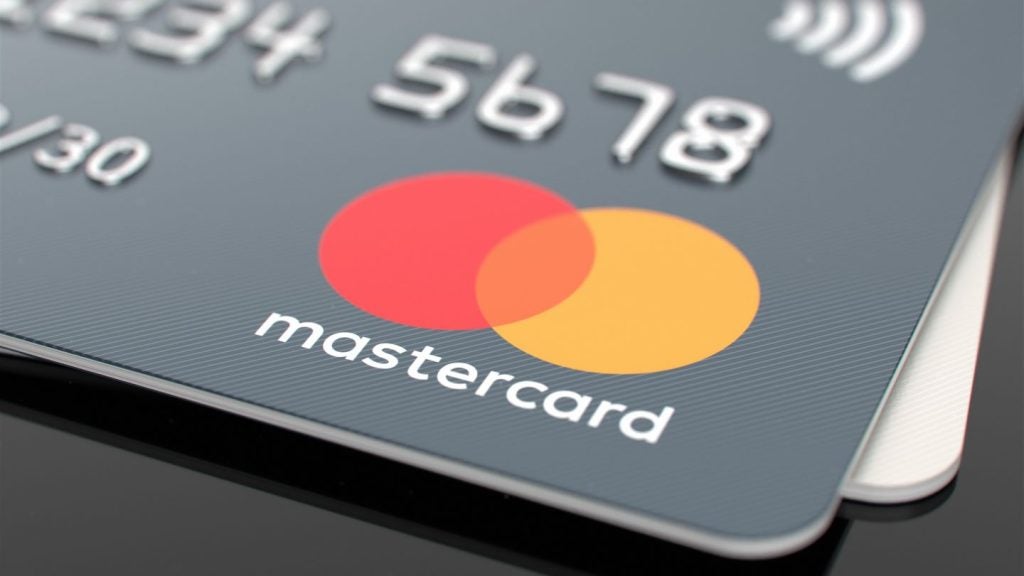The Malaysian payments market remains cash-reliant, but has high growth potential as it shifts towards digital payments.
The government and banks have started to provide basic financial services by expanding the banking infrastructure, launching new branches, promoting agent banking networks, and making efforts to change consumer habits. This has widened acceptance of payment cards in Malaysia.
Growth in POS terminal penetration, the cap on interchange fees, the migration of cards to EMV standards, and significant recent developments in the e-commerce environment have all contributed to the market’s ongoing digital transformation.

Widened adoption of contactless technology, growth in e-commerce, and the emergence of alternative payment methods are also expected to boost electronic payments in Malaysia. As part of its Financial Sector Blueprint 2011-2020, the central Bank Negara Malaysia (BNM) is promoting electronic payments.
Its initiatives include waiving fees on instant transfers of up to MYR5,000 ($1,236) and increasing chequeprocessing fees.
How well do you really know your competitors?
Access the most comprehensive Company Profiles on the market, powered by GlobalData. Save hours of research. Gain competitive edge.

Thank you!
Your download email will arrive shortly
Not ready to buy yet? Download a free sample
We are confident about the unique quality of our Company Profiles. However, we want you to make the most beneficial decision for your business, so we offer a free sample that you can download by submitting the below form
By GlobalDataThe central bank plans to have 800,000 POS terminals across Malaysia by 2020, as part of plans to improve the payment infrastructure. To support this aim, it set up the Market Development Fund in 2015, under which credit card scheme providers share 0.1% of interchange fees towards the development of POS infrastructure.
Debit cards accounted for 80.6% of the total cards in circulation in 2018 – attributed to the country’s high banked population. Although debit cards are traditionally used to withdraw cash, their use for payments, especially lowvalue transactions, is rising gradually, driven by rising consumer awareness, the introduction of contactless debit cards, and expansion of the POS network. BNM’s move to cap interchange fees on debit card transactions in July 2015 also drove merchant acceptance.

The Malaysian e-commerce market jumped in value from $1.2bn in 2014 to $4.9bn in 2018, at an impressive CAGR of 41.1%. The proliferation of internet users, growing interest in online shopping, high smartphone penetration and an increasing number of online merchants all contributed to this growth. The emergence of alternative solutions such as PayPal, Masterpass and Visa Checkout has also boosted the e-commerce market.
Prepaid cards are increasingly gaining acceptance, as they do not require a bank account and are accessible to consumers who do not qualify for a credit card. The prepaid card market registered robust growth in terms of cards in circulation, recording a CAGR of 4.1% between 2014 and 2018. The transaction value rose from $1.3bn in 2014 to $2.7bn in 2018 at a CAGR of 19.7% – a trend that is forecast to continue over the next five years.







